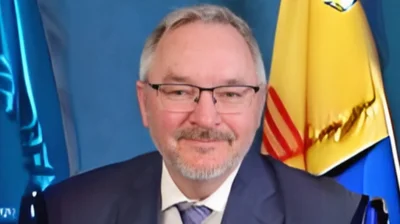The recent headline, “Debt Ceiling Deal Between White House and GOP Reached In Principle,” may provide temporary relief, but it belies a more profound, systemic issue: the perpetual and inevitable growth of debt within our monetary framework. Claims of "reducing spending" or "paying down the debt" are illusory, given the nature of the system. Any contraction of debt would trigger a catastrophic collapse.
Why so? A common misconception is that money is "printed" into existence. In reality, it is borrowed into existence. Before 1913, the US Treasury Department issued currency backed by gold and silver. Today, a private corporation – the Federal Reserve – issues our currency, loans it to the government, and charges interest. As such, our debts can never decrease, much less be fully repaid.
Imagine the first dollar ever created by the Fed. It was to be repaid by US taxpayers with interest. But where do the dollars for the interest payments come from? They're created by the Fed, leading to a seemingly endless cycle of debt creation and interest accumulation. It appears as though this system incentivizes endless dollar creation, leading some to label it a Ponzi scheme or a fraud.
But it is essential to remember, the more dollars the Fed creates, the more the government gets to spend. Like all Ponzi schemes, once the flow of dollars reverses, the scheme collapses. Until then, the beneficiaries are those at the top.
Hence, the talk of debt ceilings is largely performative. There is no real ceiling because reversing the flow would lead to a collapse, which no one wants to be accountable for. The only options are to inflate or die, as aptly put by Richard Russell.
With trillions more likely to be added to our financial system soon, one must wonder how it will impact personal investments. Upon striking the final debt deal, the Treasury Department will need to replenish its coffers quickly. It will sell Treasury bills, notes, and bonds to anyone willing to buy them. This cash will probably come from banks, leading to a potential exodus of cash from these institutions.
The concerns are not unfounded, as debt experts and risk management teams at several banks have already flagged potential banking aftershocks following the debt ceiling deal. Furthermore, upcoming corporate and individual estimated tax payments will lead to more cash exiting banks to pay the government.
So, what's next? The coming weeks and months will likely see a series of seemingly unconnected crises. A dangerous mix of too much impaired debt, bursting financial bubbles, inept policy decisions, and unpredictable war outcomes will keep the "shock" headlines coming. This will likely rattle stock and credit markets. These crises are already inevitable; it's just a matter of time before they are recognized.
Therefore, despite recent corrections, the trend persists. The best course of action might be to heed an old trading maxim: be right and sit tight.
Greg Zanetti is a financial advisor at Zanetti Financial in Albuquerque, NM.








